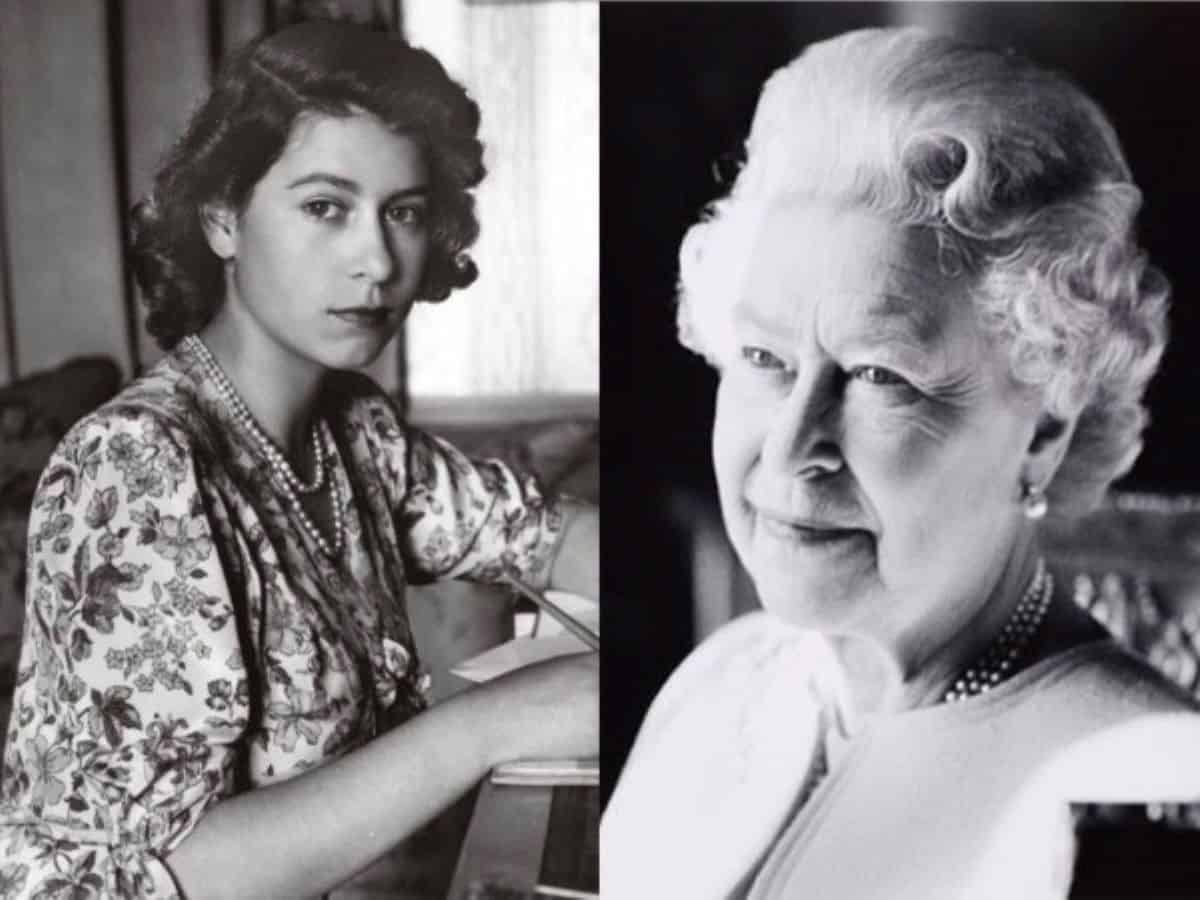
London: The longest-serving monarch of the UK, Queen Elizabeth II, took her last breath at Balmoral Castle in Scotland on Thursday.
Born on April 21, 1926, at 17 Bruton Street in Mayfair, London as Elizabeth Alexandra Mary, Queen was the oldest child of the Duke and Duchess of York – who later became King George VI – and Queen Elizabeth. At that time Princess Elizabeth and her family did not expect that she would one day become the monarch.
Then Princess Elizabeth and her only sibling, Princess Margaret, born in 1930 were educated at home under the supervision of their mother and their governess, Marion Crawford. Since childhood, Elizabeth showed a sense of responsibility and orderliness. She loved horses and dogs. The Queen’s cousin Margaret Rhodes described her as “a jolly little girl, but fundamentally sensible and well-behaved” for her attitude.
Her Royal Highness was expected to live a relatively normal, if privileged, life with her close-knit and loving family.
She was having a perfect life, but everything changed in December 1936 when her uncle – King Edward VIII – abdicated, leaving her father as King, and her as the next in line to the throne.
Later, Elizabeth ascended the throne on February 6, 1952, when her father, King George VI died.
In 1939, when Britain entered World War II, Elizabeth chose to stay in England and joined the Army rather than sailing away to Canada. She served in the Auxiliary Territorial Service during her training as a driver and mechanic when she was still a teenager.
The 14-year-old Elizabeth, in 1940, addressed other children who had been evacuated from the cities.
“We are trying to do all we can to help our gallant sailors, soldiers, and airmen, and we are trying, too, to bear our own share of the danger and sadness of war. We know, every one of us, that in the end, all will be well,” she said.
While still a teenager, Elizabeth fell in love with Prince Philip Mountbatten of Greece and Denmark, whom she had met in 1939.
In November 1947, the 21 years old, Elizabeth married Prince Philip, who was serving as a young officer in the Royal Navy. The wedding took place at Westminster Abbey in London, United Kingdom. The couple then had four children, Prince Charles, who was born in 1948, Princess Anne (1950), Prince Andrew (1960) and Prince Edward (1964).
Elizabeth’s normal life suddenly changed when in 1952, her father, King George VI died of cancer and consequently Elizabeth ascended to the throne with immediate effect. Her coronation took place in 1953, after which served as the head of the Commonwealth for seven decades.
On her twenty-first birthday, in a speech broadcast on the radio from Cape Town, The Queen (then Princess Elizabeth) dedicated her life to the service of the Commonwealth.
‘I declare before you all that my whole life, whether it be long or short shall be devoted to your service,’ she said.
Queen, then, made hundreds of overseas visits during her reign and became the most widely travelled head of multiple independent states.
In 1953, the Queen and her husband embarked on a seven-month round-the-world tour. The couple visited 13 countries and covered more than 40,000 miles by land, sea and air. She became the first reigning monarch of Australia and New Zealand to visit those nations.
She visited the United States in 1957, where she addressed the United Nations General Assembly on behalf of the Commonwealth. In 1961, she toured Cyprus, India, Pakistan, Nepal, and Iran.
In 1961 she made the first royal British tour of the Indian subcontinent in 50 years. The queen visited Cyprus, India, Pakistan, Nepal, and Iran, and became the first reigning British monarch to visit South America (in 1968) and the Persian Gulf countries (in 1979).
The reign of the Queen saw the greatest changes in many spheres, including technological and industrial development, and economic and social life across the world.
In 1977, Elizabeth marked the Silver Jubilee of her accession. In 2002, she marked her Golden Jubilee, the 50th anniversary of her accession.
In 2012, Queen completed 60 years of her accession to the throne, and celebrations were held throughout her reign.
Last year, in April 2021, Prince Philip died, after 73 years of their marriage, making Elizabeth the first British monarch to reign as a widow or widower since Queen Victoria.
Elizabeth became the longest-lived British monarch in December 2007, and the longest-reigning British monarch and longest-reigning queen regnant and female head of state in the world in 9 September 2015.
In 2017, she became the first British monarch to commemorate a Sapphire Jubilee. She was the Queen of the United Kingdom from 6 February 1952 until her death on Thursday.
This year, the celebrations of Queen Elizabeth II’s Platinum Jubilee, marking 70 years of service to the people of the United Kingdom, Realms and the Commonwealth were held. The four-day-long royal celebrations, while the queen turned 96, were attended by millions of participants.
Her Majesty’s extraordinary life and reign, from a young girl who did not expect to be Queen, to an iconic and celebrated figure who has ruled for more than 70 years came to an end on Thursday.
Elizabeth II, died peacefully at Balmoral castle aged 96, the royal family said in a statement. The UK’s longest-reigning monarch was placed under medical supervision earlier on Thursday after her condition deteriorated.
Buckingham Palace issued a statement while referring to the Prince of Wales, Charles as the King.
“The death of my beloved Mother, Her Majesty The Queen, is a moment of the greatest sadness for me and all members of my family. We mourn profoundly the passing of a cherished Sovereign and a much loved Mother. I know her loss will be deeply felt throughout the country, the Realms and the Commonwealth, and by countless people around the world,” the statement said.



